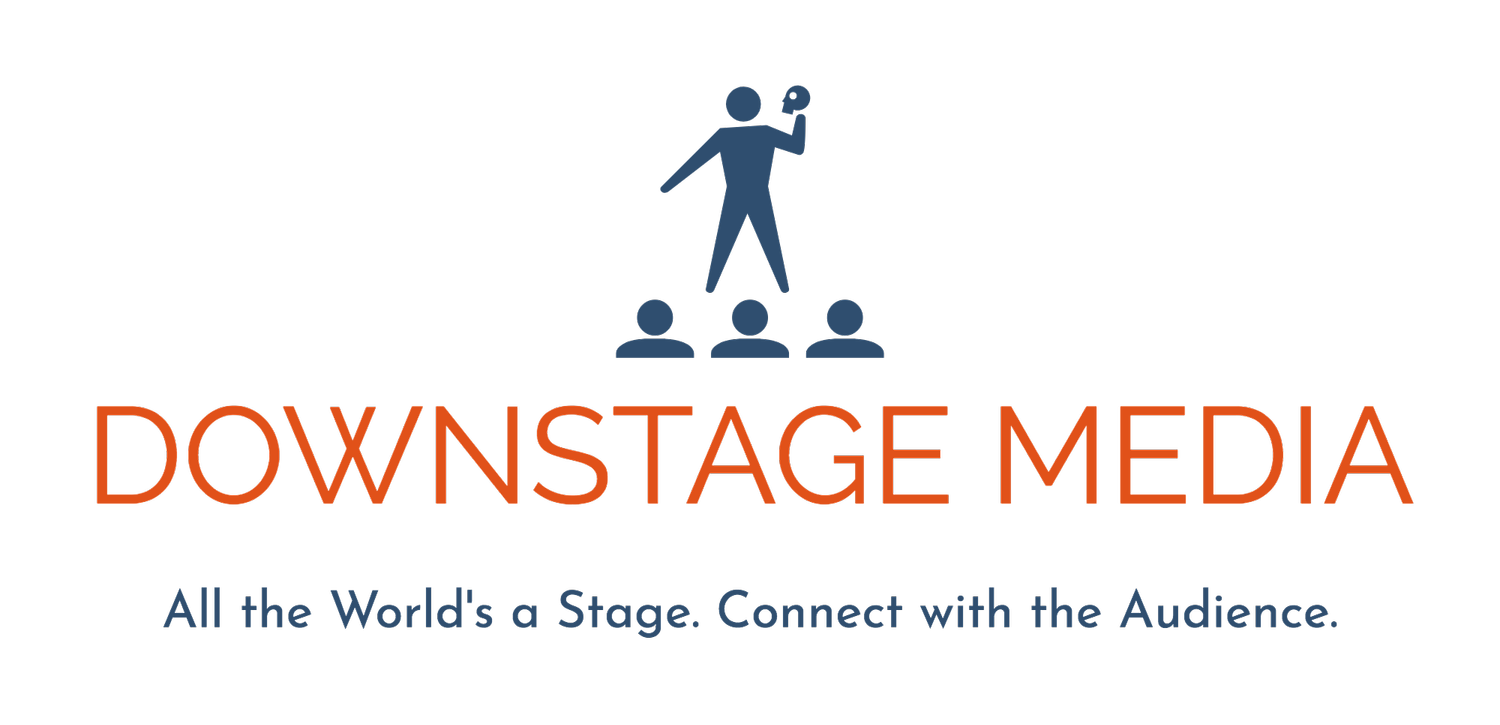7 Elements Every Lead Generator Needs
No one wants to take the time to create a lead generator and then automate it with their email platform, if it’s not going to build relationships with your audience. But a lame lead generator can do just that. Dive in to the seven elements your lead generator needs to establish your brand, project, or company as one that’s worth knowing!
Hold Up. What’s a Lead Generator Again?
A lead generator - sometimes called a lead magnet - is a piece of content that a company or brand gives out in exchange for an email address. It often comes in the form of an ebook, or a PDF. Although we get creative here at Downstage Media and many of our performing arts-based brands have used a video series, an mp3, or a playlist as a lead generator. Whatever form it takes, the idea is that you are giving your audience a bit of information while at the same time helping to build your email subscription list.
Lead generators are key step to set up in your marketing. And one that I go through quite thoroughly with clients in the StoryBrand Marketing Livestream as well as the DIY: Marketing Mentorship.
When done right, lead generators establish you as a leader in your space. You want someone to look at your lead magnet and say, “Oh, yeah, they know what they’re doing.”
And once you establish yourself as a leader in your space, that’s when those same leads become buyers.
Not sure if you have a lead generator? Take the Storybrand Marketing Assessment to find out. Otherwise, keep reading.
Without the Right Pieces, Your Lead Generator Won’t Work
Audience members won’t become buyers if you don’t have key elements in place. The person who gave you their email address may not even open it, or won’t take action at all. The saying goes, of course, that you can lead a horse to water, but you can’t make it drink. But, you can use certain words to make that horse pretty darn thirsty.
So let’s break down what shape those words should have so that you get the most out of the time you spend creating and automating your lead magnet. Because if you are stretched too thin, every moment that you have absolutely counts.
Take these pieces, slot them into your lead generator, and start building your audience or your client base with this effective tool.
The 7 Elements Your Lead Generator Needs
(These probably won’t make sense out of context, but use them as a cheat sheet after you’ve read this blog post.)
Catchy Title
Introduce the Problem + Empathy + Authority
Ramp Up the Problem + Stakes
Offer a Solution
Give ‘em the Goods
Cast a Vision
Call to Action
Let’s dive in to each one.
#1: Catchy Title
A great title gets noticed. It piques your audience member’s attention. When coming up with a title for your lead generator, you want to consider a benefit that your reader is going to experience, or a problem that you are going to solve.
For example, imagine you are a company that leads communication workshops. Your lead magnet is a video series that illustrates exercises a business can use to improve its communication in a meeting and get the attendees thinking more creatively. You could call it:
5 Ways to Improve Your Communication in Your Next Meeting
But, that’s not necessarily going to hook someone in. Instead, add a little drama and flair (that’s big here at Downstage Media) and take a look at it again.
5 Sure-Fire Communication Techniques to Boost Creativity a Your Next Meeting
Right in the title you have assurance that the techniques work, when to use them, and a clear benefit.
#2: Introduce the Problem + Empathy + Authority
The first thing that your lead magnet should address is the problem that you solve. It’s the difference between what I call the “oh, that’s nice” factor versus the “I need this” factor. If you talk about the great thing that they’re about to learn or - even worse - simply launch into the material itself, your audience won’t see why it’s important that they check it out right now.
However, if you start off with the issue that your lead generator is going to take care of, that’s where your audience sees its importance. Not only that, but if you talk about how your audience member feels having this problem - and the relief they’ll feel after it’s solved - you’ll start to appeal to them on an emotional level as well.
Right around the beginning of the second paragraph or so, the reader (or listener, or viewer) may start to doubt that any of this is going to work for them. They’ll start to make excuses and have kind of an “easy for you to say” attitude about the material.
That’s when it’s important to bring in some empathy. You get how they’re feeling. You’ve been there. And you want to share how you got through it to.
How you got through it, or the results that you’ve had are examples of the authority that you have in the industry. In a sentence or two you can easily say, “we’ve done this for thousands of companies, and we can help you too.” Bonus? Show them with screenshots, before and afters, or other visual forms of proof.
#3 Ramp Up the Problem + Stakes
Now is a good time to remind your audience that it doesn’t have to be this way. That whatever annoyance or problem you bringing up has been a bit of a thorn in their side. But it doesn’t have to stay that way.
In the theater, we talk about “raising the stakes.” It’s not just that the Baker has to get the items in the next few weeks or so, he has to get them by midnight so that the spell will work. If he gets them all? The witch will give him the child he and his wife want so desperately. If not? He is destined to remain childless forever.
Those are some high stakes. (Thank you James Lapine and Stephen Sondheim!)
You can raise the stakes of your lead magnet too by sharing:
what happens if you get this right
what happens if you do nothing
Raising the stakes is a powerful dramatic tool.
#4 Offer a Solution
I like to say that brands usher customers through an experience. And by taking a sentence or two to share what it is they’re going to be watching or listening to or reading is a nice way of doing so. It can be very easy, “In the next five minutes, I’m going to lay out for you what mistakes people often make when it comes to x and how they can fix them fast.” Boom. Simple.
#5 Give ‘Em the Goods
Now that your audience knows what problem you are solving for them, why it’s important, and what they are going to be receiving. it’s time to actually launch into the material that you have prepared. To take from an earlier example, this is where they get those five sure-fire techniques laid out.
If possible, have some visuals to break up all the text.
#6 Cast a Vision
Now, by the time that your audience has gotten this far in your lead generator, they may start to doubt that they can actually do it. That they can take the steps necessary to tackle the problem that you outlined and solved in your lead generator. So this is where you show them “the promised land.” This is where you paint the picture - with very visual and specific imagery - for them what life is like on the other side. Great ways to begin this section include:
Imagine
Can you see how great it’ll be when
Think how impactful it will be when
Think of Tony and Maria singing, “Somewhere.” Even though they know the road is going to be hard, they know that eventually they will find, “peace, and quiet and open air.” By tapping into that image it propels them to move forward with their plan. (Okay, so they didn’t actually find that place, if you know the plot of West Side Story. But you can see how singing the song to one another did propel them to take action. Which, is what you want them to do. I mean, we can’t control Chino, can we?)
#7 Call to Action
You audience may realize that they don’t actually want to tackle this problem on their own, they’d rather hire you. Or, they want to dive even deeper into the topic. Or they tried it, but they still need help filling in some blanks.
All of this means that they are going to need to reach out to you.
Make sure to put a clear call to action at the end of your lead generator.
You Have All the Pieces You Need
With these seven elements, you can create a lead generator that builds your subscriber list while at the same time building your credibility, and fostering strong relationships with your audience. So figure out what small win you can give to someone, reverse engineer what problem it solves for them, and build a lead magnet around it.
Then, you can create an automation in your Mailchimp, or Constant Contact, or Hubspot or whatever (at Downstage, I recommend Mailchimp) so that whenever someone requests your lead magnet they get added to your subscriber list.
I assume that anyone reading this is putting out good work that deserves to be seen. So the more people who know about that, the better. And a great lead generator is one of the perfect tools to grow your impact.
For help on creating your lead magnet, or automating it with your email provider, schedule an Intro Call.











